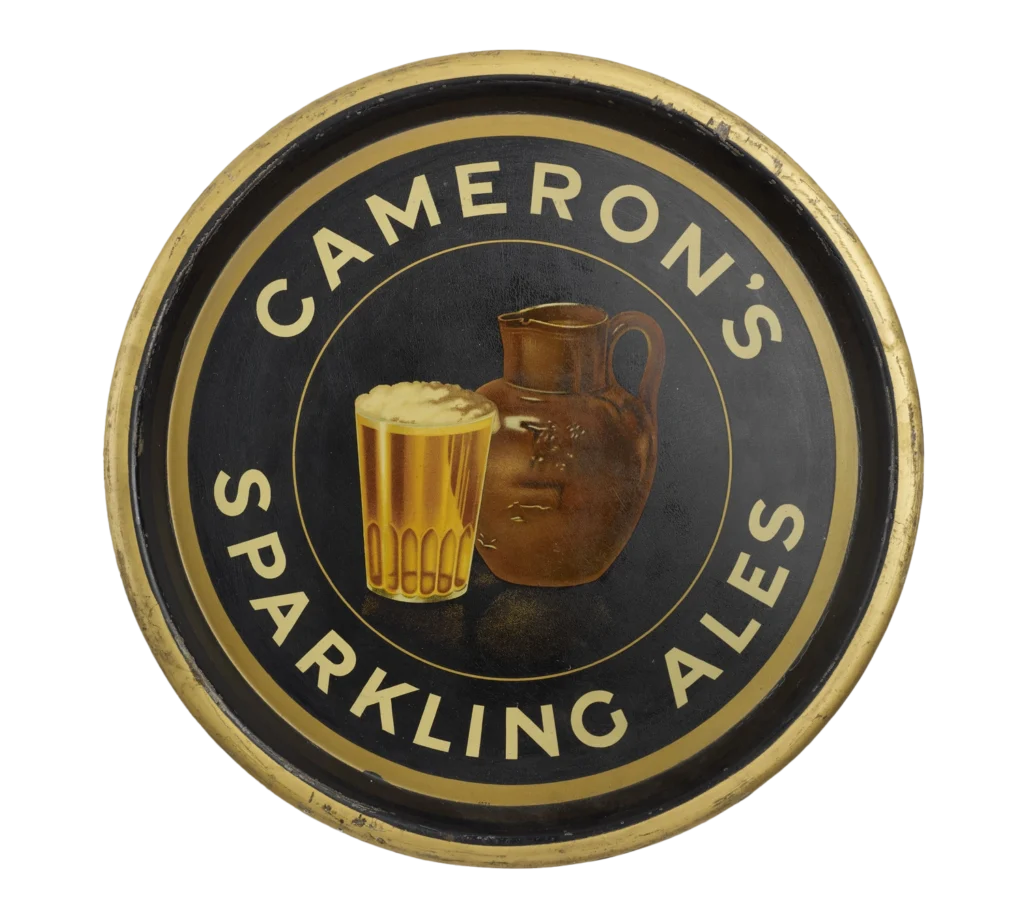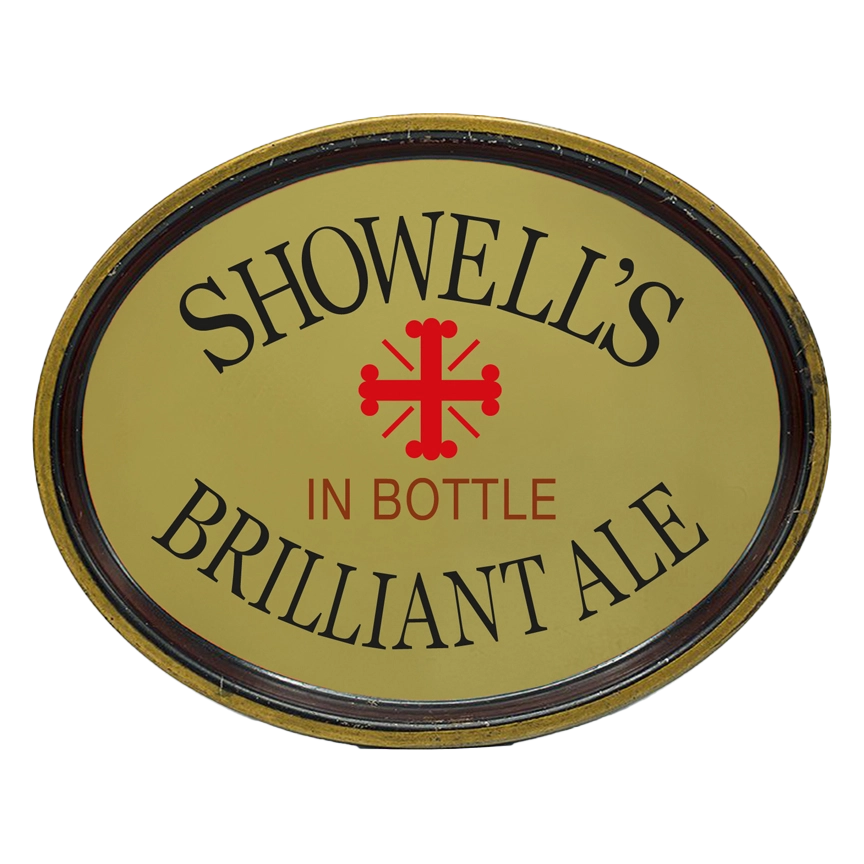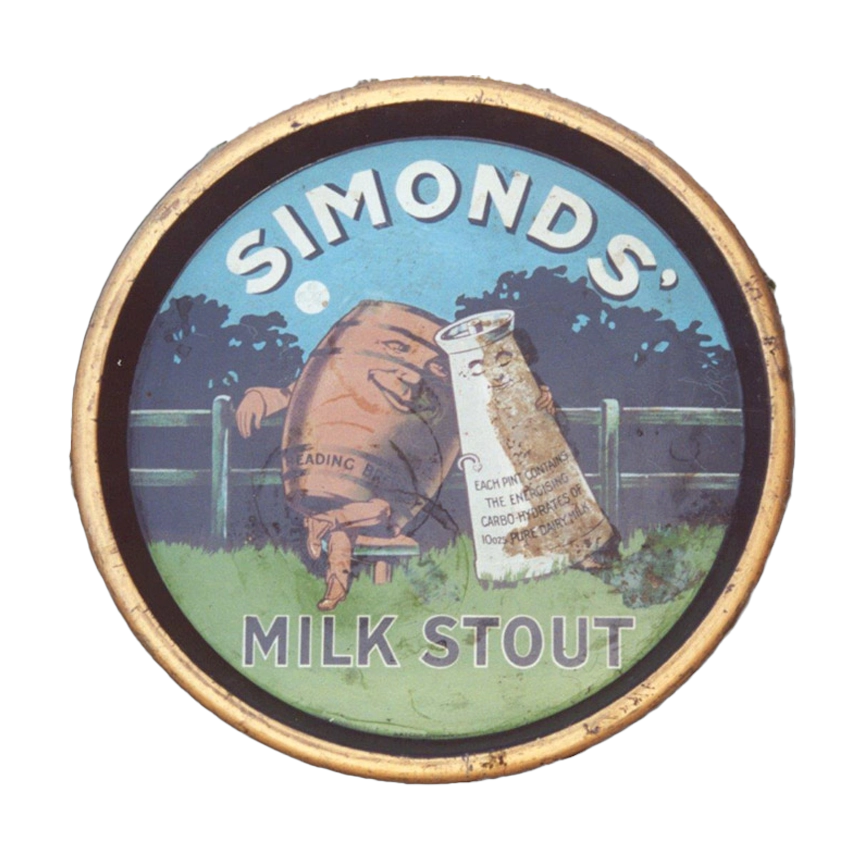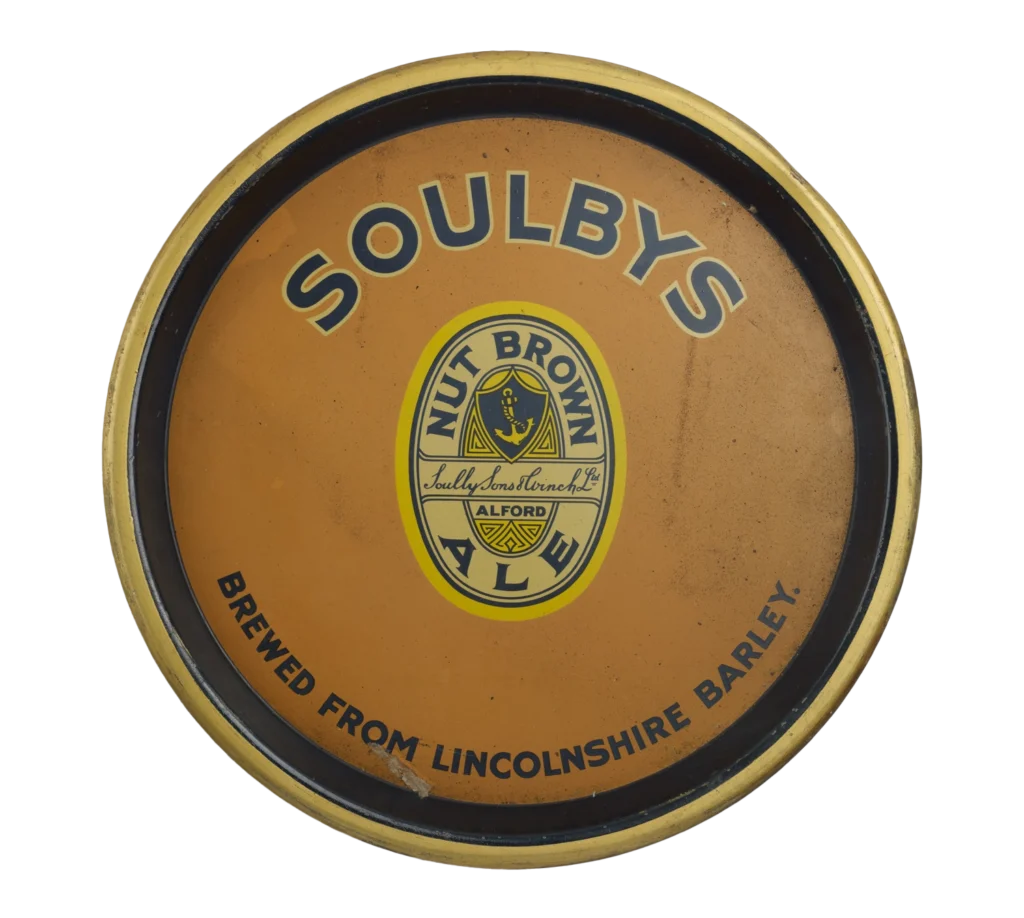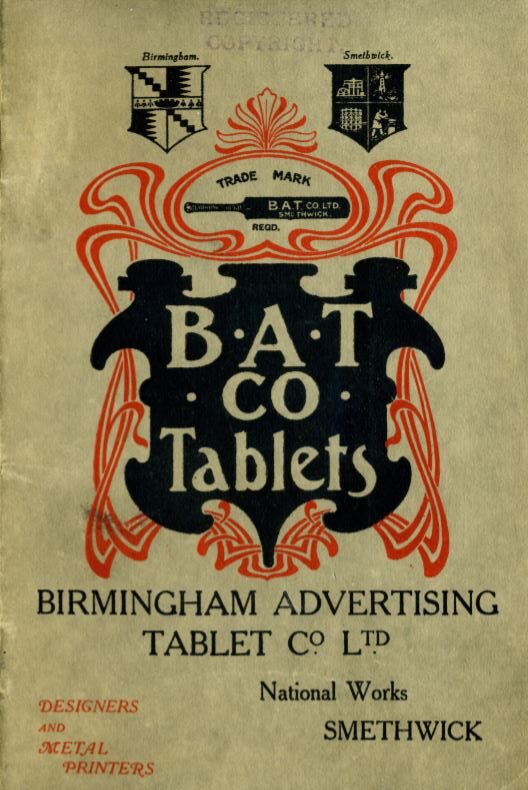THE BIRMINGHAM ADVERTISING TABLET CO. LTD
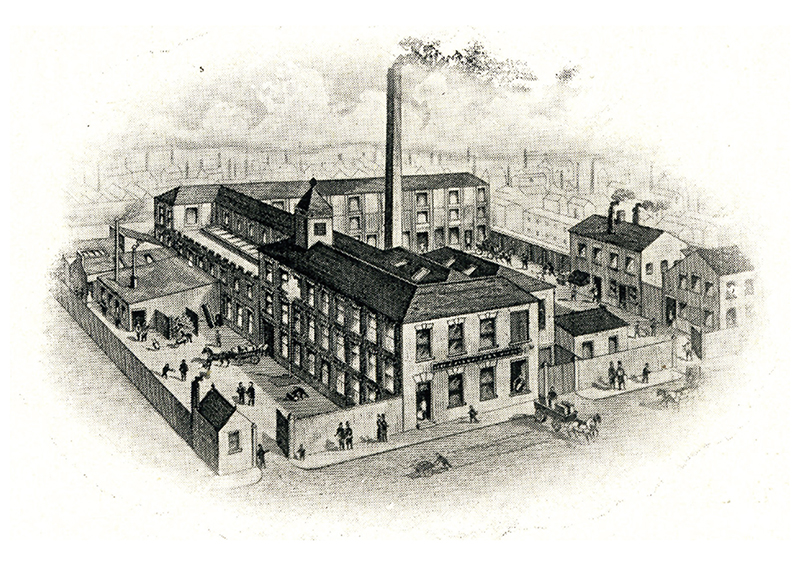
B.A.T. Co. Ltd produced some of the finest examples of British brewery trays. I have over forty items in my collection with another six known which I am still searching for, six of which are pictured at the end of this history.
A family business, the Company produced a wide range of advertising materials from 1900 to 1966.
Its trade catalogue of 1907 demonstrates why its was one the best manufacturers of fabulous advertising pieces. (Click the image below to view the 1907 B.A.T. Co. Ltd Catalogue).
The Early Years 1900 to 1914
Originally, B.A.T Co. was based at the “Sampson Road Works”, a large site that had been owned previously by the Birmingham Bedstead Co. until 1893. Future owners were R F Hall Cycle Components manufacturers, and Rippingille Brothers iron founders, and then B.A.T. Co.
In 1902 the Company moved to premises in Mafeking Road, Smethwick then situated in Staffordshire.
The B.A.T.Co Ltd factory was named ‘The National Works’ as shown in the 1907 catalogue and this is lovely example of a ruler with all the firm’s details. This was presumably a gift which was supplied to its customers.

Thanks to Ken Rowsell for donating this piece of advertising memorabilia for B.A.T.Co.Ltd

It is unclear exactly when advertising trays, or waiter trays to be accurate, started to be manufactured at the National Works but it is certain that some examples were produced before 1907.
On page 19 of the catalogue, there are wonderful pictures of trays which I would love to own, including ones from Showells, Allsopps and Bass breweries. Simply fantastic!
I do have an oval tray produced for Warwicks & Richardsons Ltd dating from around 1910.
The item is unusual, and extremely rare, in that it is the only example I have in my collection with the B.A.T. Co. Ltd trade mark which was a cricket bat. This trade mark seems to have been dropped after WWI.
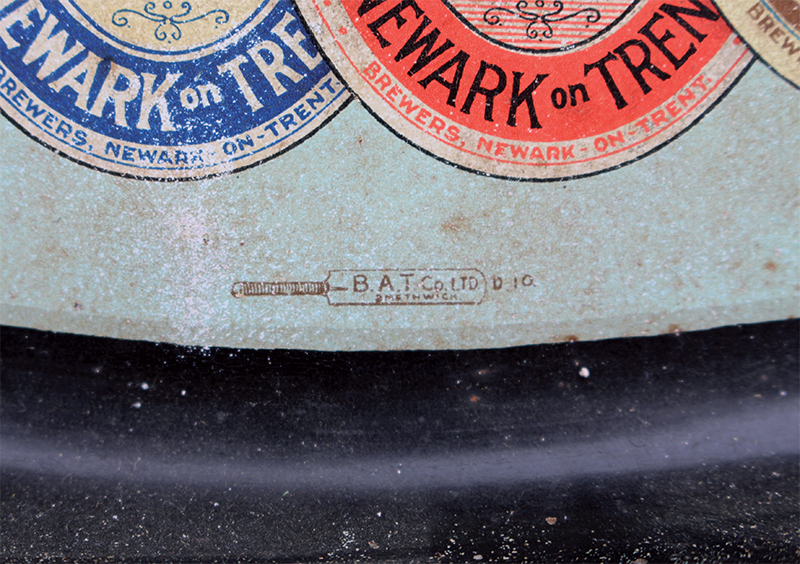
The fact that in the early 1900s the Company had its own offices and showroom based in the City, at the London Holborn Viaduct, illustrates how successful business had become. Indeed, not only was the Company manufacturing trays for many breweries but they were also supplying big Scottish whisky brands such as Walker’s of Kilmarnock, Haig’s of Markinch and Whyte & Mackay’s of Glasgow. A few contracts had been secured with Irish distillers too.
WWI ‘The Great War Years’ 1914 – 1918
In 1914 business was interrupted by the outbreak of World War I.
Although there are no remaining records it seems likely that B.A.T. Co. Ltd was seconded to support the war effort during this period, which is a task it also performed thirty years later.
Between the two World Wars 1919 – 1939
For a significant number of years, between the two World Wars, the Company was under the leadership of Norman Richmond. These thirty years were the most successful in its history.
No official employee records exist for the period but two photographs of the Company annual outings during the 1920s show that the Company employed over 50 individuals then.
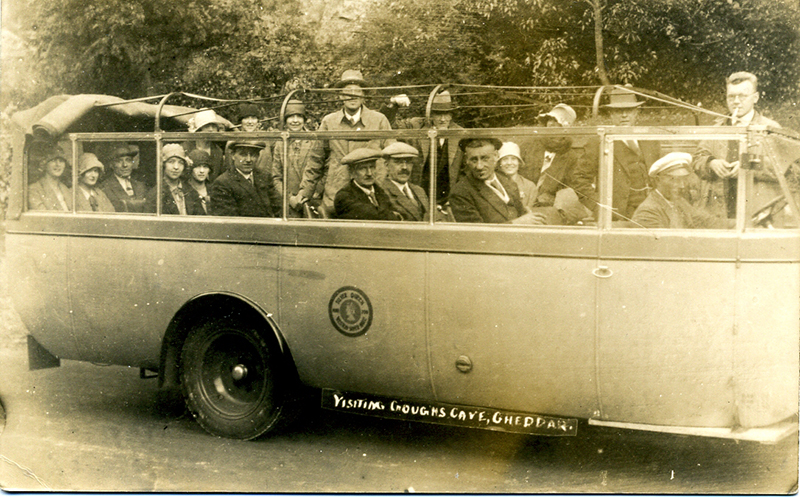
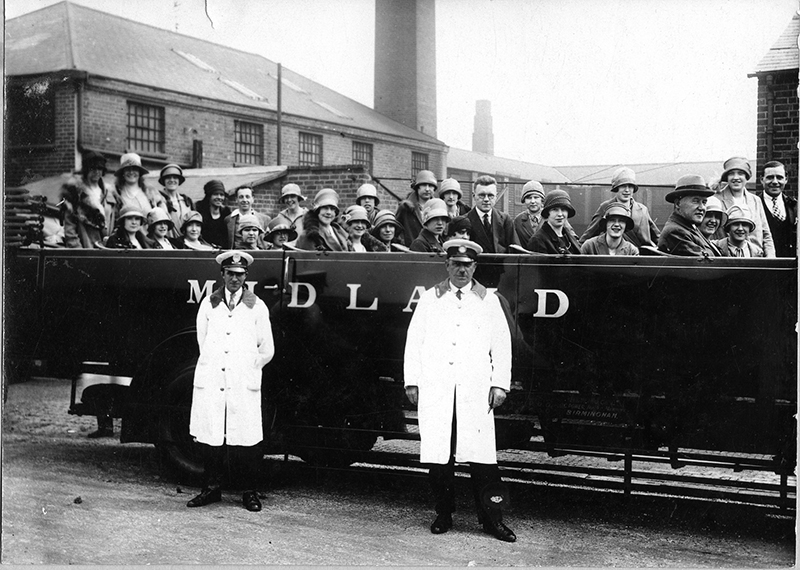
During the 1920s and 1930s all forms of advertising continued to be produced by the Company, including tin signs & showcards and other metal objects, however it was the production of trays which took up most capacity in this era.
All trays produced by the Company before WWII had the distinctive feature of black backs, part of the production process called ‘blacking’, and each tray also displayed gold coloured rims, the base of which was produced from mustard seed. Both these specific manufacturing processes ended after the Second World War. At the time it was not uncommon for production runs for individually designed black backed trays to be 5,000+. This makes you wonder where the other 4,999 disappeared to?
World War II 1939 – 1945

As with all British tray manufacturers, WWII saw dramatic changes in the products produced by B.A.T. Co. Ltd.
Overseeing all war work was the Ministry of Munitions & Production, which was attracted by the Company’s ability to work with sheet metal, and also its ownership of specialist tools and machinery.
The result was that instead of producing brewery trays, in order to support the war effort, the Company manufactured bomb tails, depth charges and other ‘War effort’ objects.
1945 – 1966
After the Second World War B.A.T.Co.Ltd once again reverted to the manufacture of all types of advertising items with trays continuing to generate much of its sales during the early to mid-1950s.
The key difference straight after the War was that all trays were manufactured from lightweight aluminium in contrast to the heavy tin plate used before the war.
Manufacturers, of which B.A.T. Co. Ltd was one, were restricted from using tin plate and this ban was only lifted by the government in 1955.
Sadly, due mainly to the onset of increased TV advertising, this meant that demand fell drastically, and the Company was closed in 1966.
Memories of the People who worked at B.A.T. Co. Ltd
Whilst researching the Birmingham Advertising Tablet Company Ltd I was helped by the Wolverhampton Express & Star newspaper. After my article was published two individuals kindly contacted me, 78 year old Jean Radford, a factory worker, and Simon Richards, Son of Colin Richards who had been Finance Director and Company Secretary during the 1930s, and Managing Director during the 1950s and 1960s.
Here are their fascinating stories summarised through separate Question and Answer sessions:
I interviewed Simon Richards on 4th February 2016.
Q: How were you associated with B.A.T. Co. Ltd?
A: B.A.T. Co was a friendly family business. My maternal Grandfather, Percy Richmond, was Managing Director in the early part of the 20th Century and then my Uncle, Norman Richards, succeeded him as MD in the 1920s. My Father, Colin Richards, joined Norman in the 1930s and served as Finance Director and Company Secretary during that period. After the Second World War my Father became Managing Director until the business closed in 1966. I went to the factory as a schoolboy during the 1950s when he worked there and I regularly helped out on Saturdays. I was never employed full time but I do have many fond stories both from my Father and my weekend work.
Q: What were your memories of factory life?
A: I have to describe it as an atmospheric experience with the enormous horizontal steam engine holding centre stage, belching steam and oil and thudding every 5 seconds, with strong smells of printing ink and varnishes – it was a noisy cacophony of sound. The factory was always warm in winter though, as the exhaust steam from the engine was circulated around inside the factory. In the summertime the exhaust was discharged down the well in the yard, and neighbours in the back-to-backs adjoining the factory used to complain that their cold water was sometimes warm, and sometimes even hot!
There was a system of railway tracks across the factory floor and a turntable in the floor in a siding by the lift for all the raw materials to be transported. There was a lift trolley too, operated by power from the steam engine.
It was really like one huge family all working together in a bustling environment.
Q: Can you remember any of the characters who worked for the company?
A: I remember some of the names – Harold Guest, who was the stoker in charge of the engine and so a very important member of staff.
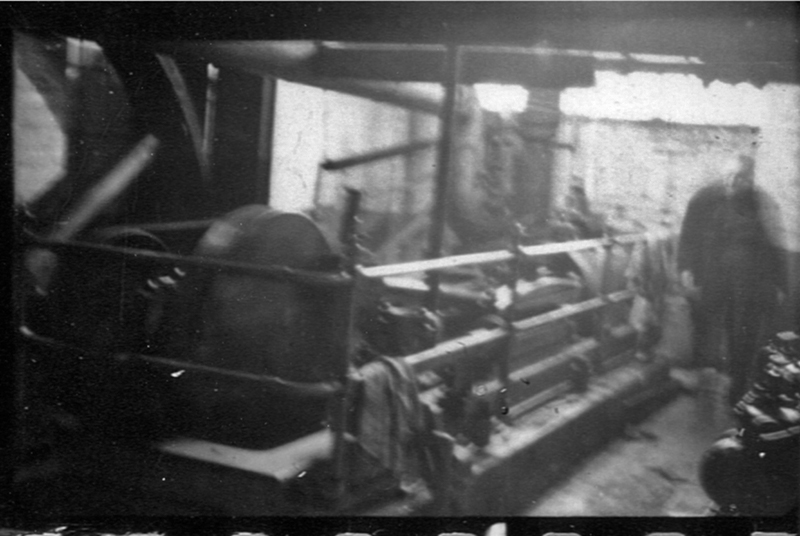
There were two ladies in the packing room – May and Mrs Thomas, both quite elderly I recall, and they interleaved the trays with greaseproof paper and packed them immaculately. They had worked there all their working lives and stayed until the Company shut.
The secretary was Letitia who worked on an old fashioned typewriter. I can also remember Harold Shipley, Harold Weeks and Arthur Finney, lots of names and lots of nice people.
Q: Can you recollect anything specifically about the manufacture of trays?
A: There are a few things I do remember. The tin plate used to produce the trays came from Margam South Wales steelworks, and was transported on stillages, like pallets, from the Great Western Railway. We had a tool called the ‘Red Devil’ to undo them all.
Brass wasn’t used after WWII and there was a limit on tin then so we used light alloy instead. Tin was used again in quantity after 1955 but I don’t think the Company produced trays after that date. (Indeed the last trays in my collection with the B.A.T.Co Ltd mark, date from 1955)
Our paint came from Mandas Limited based in Wolverhampton.
The production of trays was quite dangerous as you had to catch the printed trays as they fell. There was little Health and Safety in those days. The factory inspectors insisted on guards being put in front of the presses, so we had to make sure that we put them on before the inspectors came. Sometimes the guard fell off and the trays hit you instead.
There were two or three people colouring the trays – you put on a background colour first, then ran them through again with the succeeding colours. I remember that it was very easy to misplace the colours on the trays. Latterly we made trays without adverts for domestic use.
Q: Are there any other stories worth capturing?
A: Yes. During WWII the Company had to make equipment for the Department of Munitions. It was engaged in parachute assembly which was not top secret but no-one understood what it was for. What that was, was a large steel box which, when opened, had a canister with a parachute inside, a figure of eight hawser of considerable length, a rocket, and a huge ball of string.
If an air attack was anticipated, for example on a Rolls Royce factory, you would open the box, set the rocket off with the canister and parachute attached and one end of the ball of string also attached to the canister. When the string was exhausted, extended to its maximum, the parachute would be released leaving it hanging in the air to damage enemy aeroplane wings!
We had many unexpected visits from the Ministry to test the item and were left with lots of parachutes hanging in the sky. They were used at the Rolls Royce factory too, which was working on Merlin engines.
There were houses on the factory site that were certainly inhabited during WWII when the inhabitants were charged with ‘firewatching’ but I don’t think the factory ever suffered any damage.
Q: Any final thoughts?
A: The factory was great to work and I think that all employees felt the same way as I did. Certainly, the annual factory trips were looked forward to by everybody. It was a sad day when it closed in 1966. Dad went to another printing firm but kept the Office clock as a reminder of the good old days. The clock required winding every day and I donated it to the Midland Automobile Club, of which I am an eager member.
My other Q&A was with 78 year old factory worker Jean Radford who I interviewed in 2015. Jean worked for the Company from 1951 to 1966 when it closed.
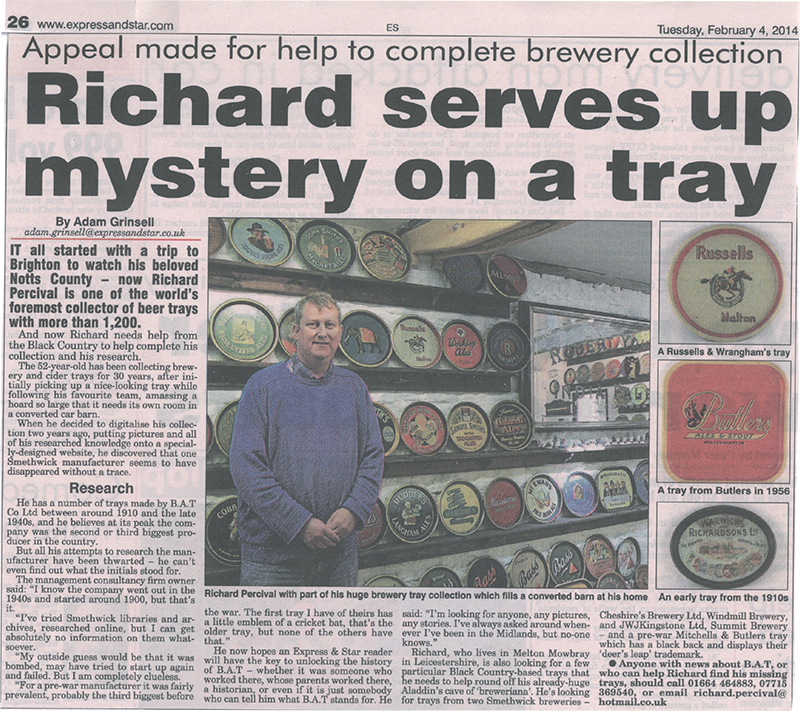
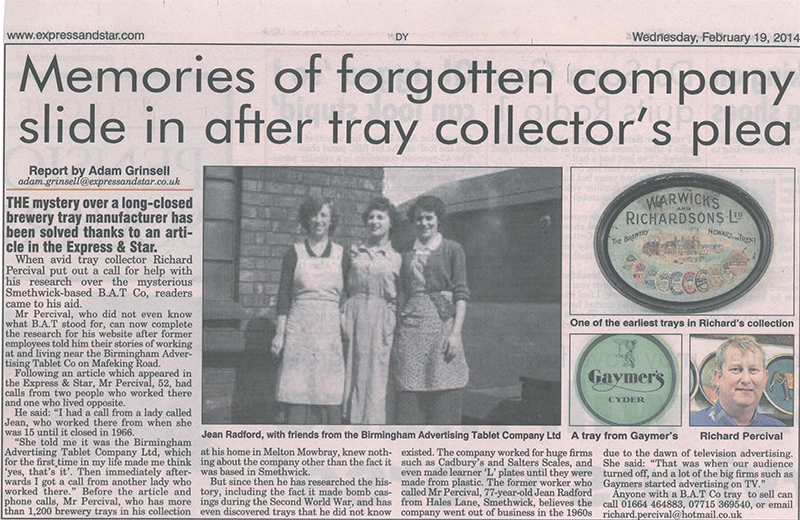
Q: Whilst you were working at B.A.T.Co.Ltd what products did you manufacture and for which customers?
A: Trays were the main product but we also manufactured tyre stands for Dunlop in India, wall plates for Cadburys which were placed outside shops, Salter’s dials, L-Plates by the thousands, shelf strips for Lucas lamps, Bell’s knitting needles numbers and umbrella strut strips for Page & Fox.
These are just a few examples.
Q: What was the best part of working for B.A.T. Co. Ltd?
A: I loved every moment that I worked for the Company, every day was a joy.
We had so much fun, it felt like we were a complete family. I remember fondly my first trip to the Festival of Britain in 1951.
It was great, no Health & Safety in those days!
It wasn’t until 1959 that we converted to electricity, before that we relied on steam engines.
I only left because the factory closed in August 1966 and I then spent 40 years in the Birmingham Jewellery Quarter.
Q: So what was the least pleasant experience working in the factory?
A: Working with sharp sheet metal was quite dangerous and I remember cutting myself all the time.
On some occasions I would have up to ten plasters on my fingers.
Although I did cut myself badly a few times, once you got used to handling sheet metal you were quite ok.
Q: Apart from handling sheet metal what other jobs did you do throughout your 15 years at the Company?
A: I managed to cover almost all the tasks involved in tray manufacturing.
Apart from handling sheet metal I then learned how to rack in ovens in order to dry them.
I also worked for a time in the varnishing shop where products for outside use were varnished to make them weather resistant.
The varnish used to make me cry.
In the Printing room I was a ‘thrower up’, this meant I would literally throw black sheets into a machine at the top and this would ensure that they would be printed when they came out the other end.
I was also a racker on the printing machine. Finally I was a ’layer on’ where I would place a sheet into small grippers until it stopped, then turn to print.
This was a very precise and highly skilled job where you had to be so accurate with every colour.
Q: In your opinion why did the factory close?
A: The factory closed due mainly to TV advertising.
When ITV was created orders began to slowly drop and then almost dried up completely.
The Birmingham Advertising Tablet Company Ltd closed in August 1966.
Final Comments
Despite significant research I am sure that there is a lot more information to uncover about this tray manufacturer.
Thank you to Simon Richards and Jean Radford for providing a fascinating insight into the working experience at B.A.T.Co.Ltd.
Remarkably I didn’t even know what B.A.T.Co.Ltd stood for until Jean contacted me but I now know a lot more.
If anyone has any further information or pictures in connection to the Birmingham Advertising Tablet Company Ltd, I would be very grateful to hear from you.
Below are six superb examples of trays produced by B.A.T.Co Ltd which are still missing and ones which I would love to add to my collection.
